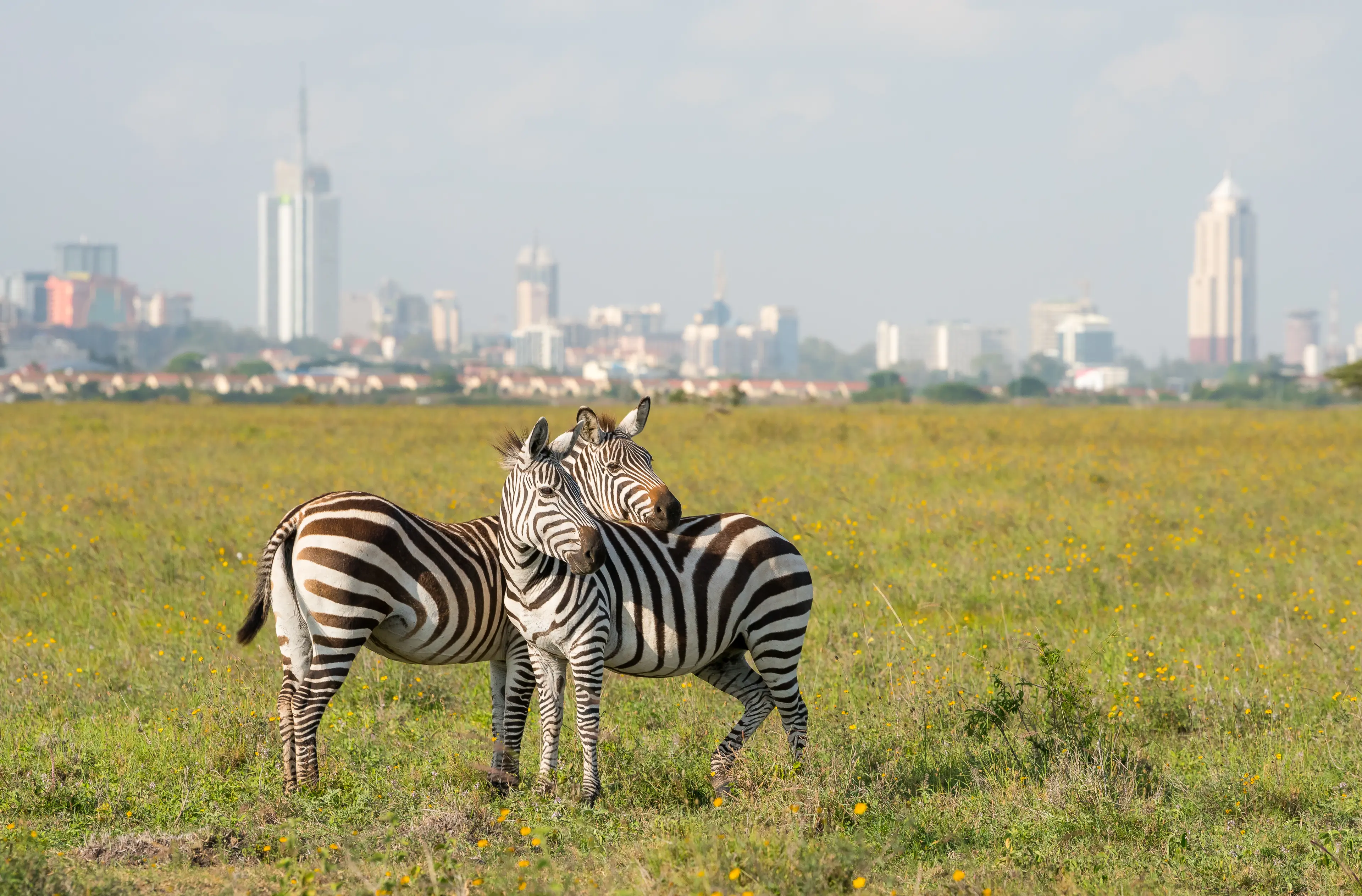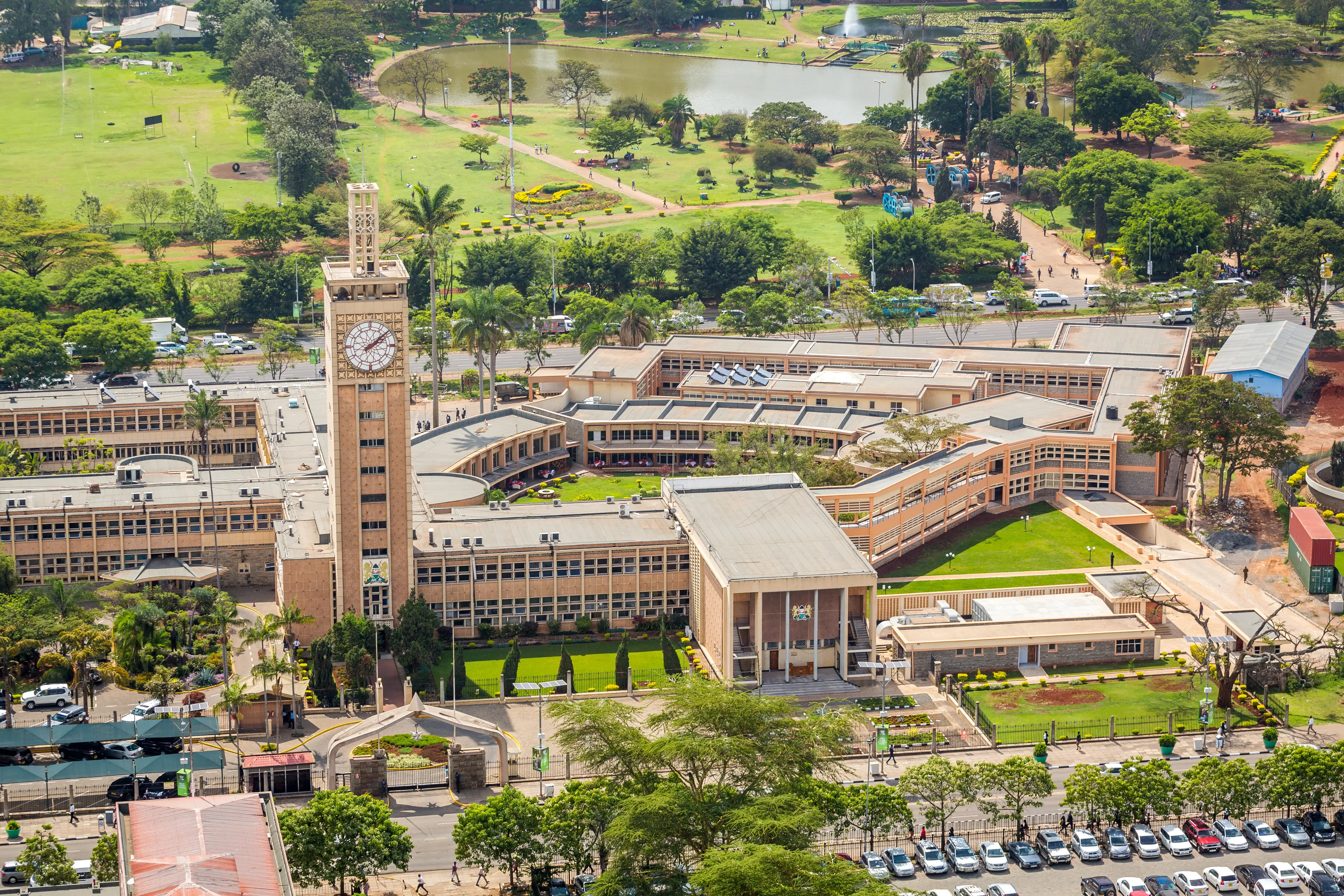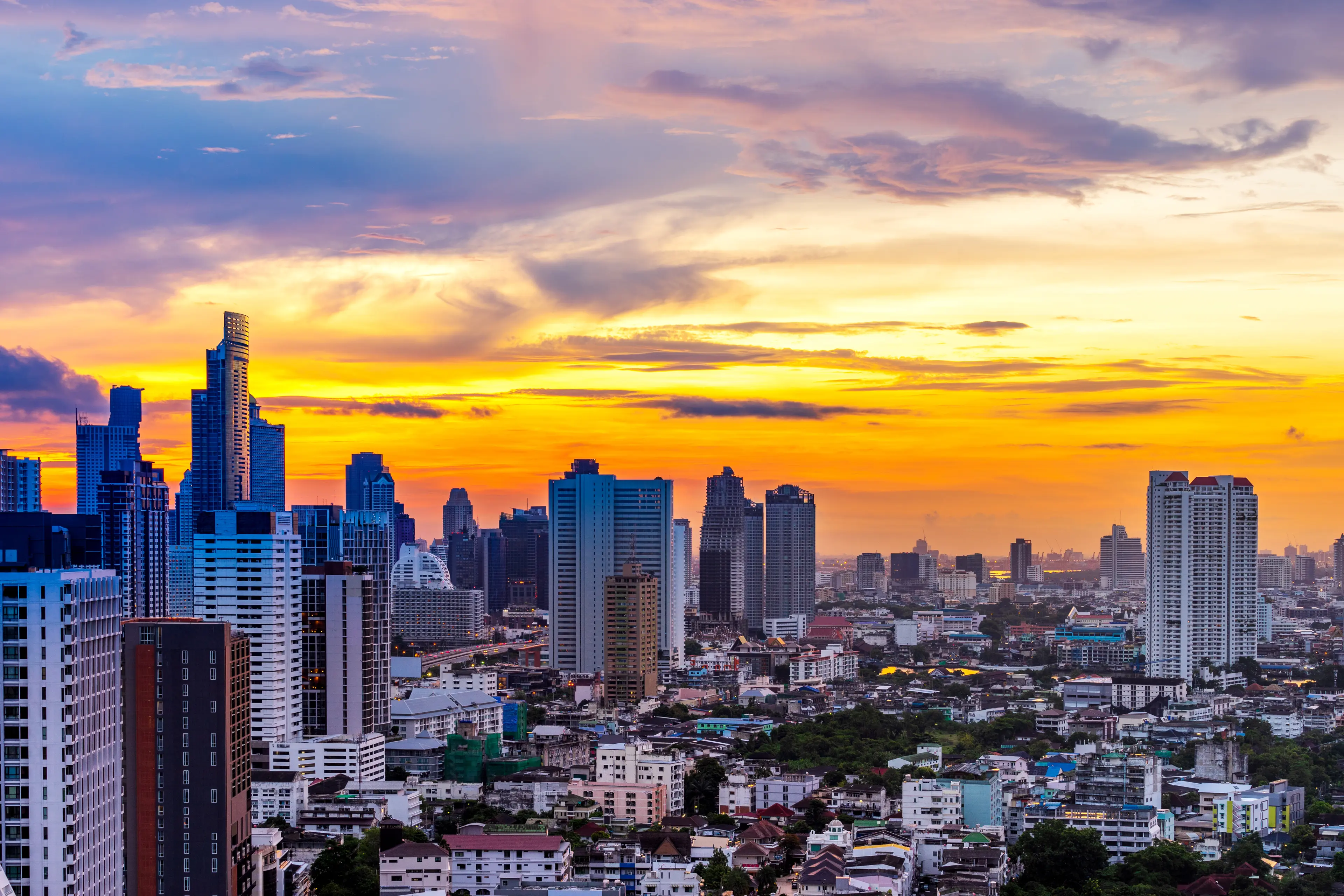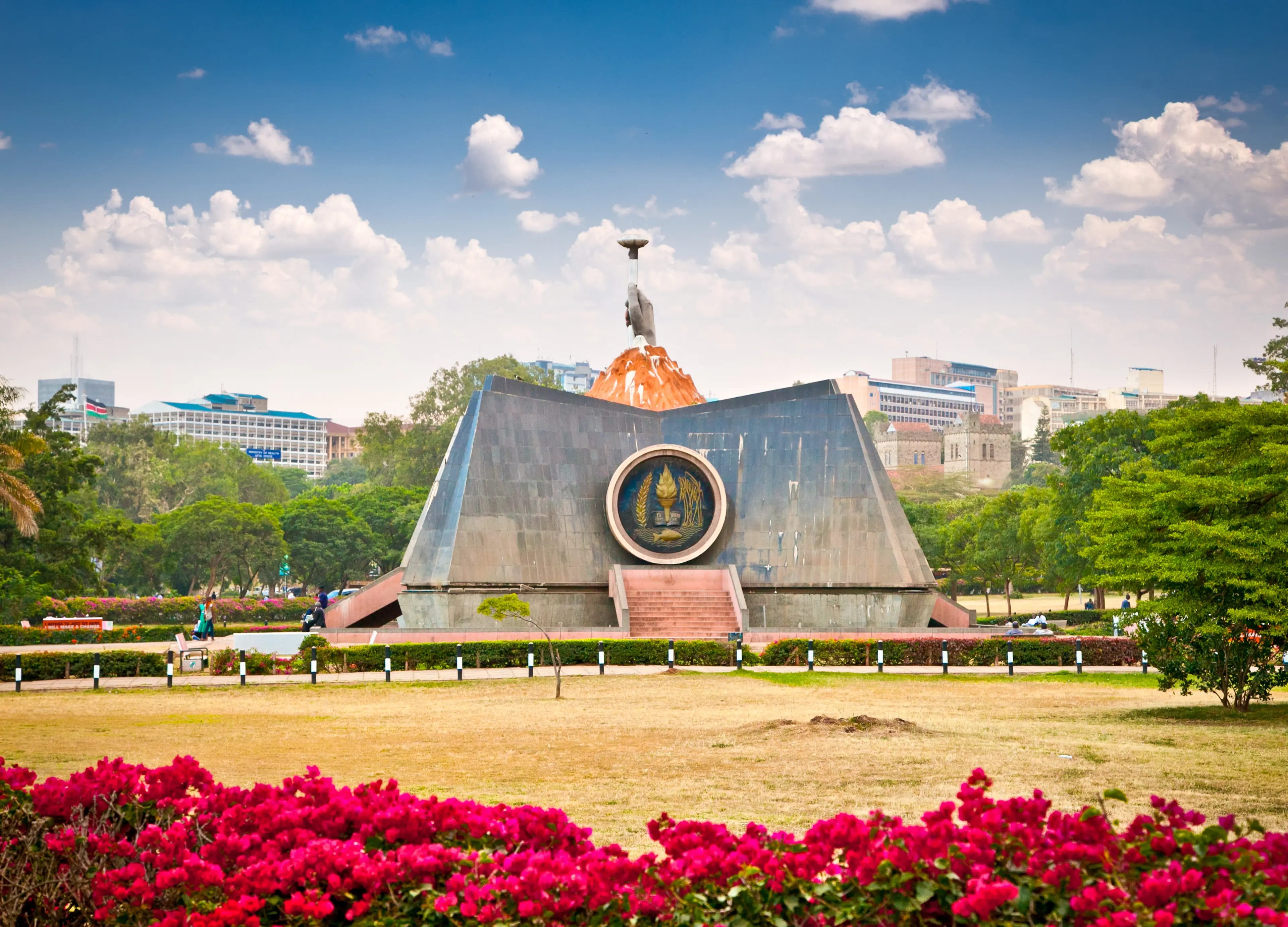3-Day Local Family Adventure: Nairobi Sightseeing, Outdoors, and Culinary
Nairobi, Kenya
3 days





About Nairobi, Kenya
Experience the vibrant culture and rich history of Nairobi, Kenya's bustling capital. This city offers a unique blend of modern urban life and natural beauty, with its towering skyscrapers and sprawling wildlife parks. Visit the Nairobi National Park, the world's only game reserve within a city, to see lions, giraffes, zebras, and more. Explore the David Sheldrick Wildlife Trust to interact with orphaned elephants. Dive into history at the Nairobi National Museum or enjoy shopping at the Maasai Market. Nairobi also boasts a thriving food scene, with a variety of local and international cuisines. Whether you're an adventurer, a history buff, or a foodie, Nairobi has something for everyone.
3-Day Itinerary
Day 2
Journey through History and Culture
Morning
Begin your second day with a visit to the Nairobi National Museum. Explore Kenya's rich heritage and history through various exhibits.
Lunch
Have lunch at a local restaurant. Try some coastal dishes like pilau and biryani.
Afternoon
Spend the afternoon at the Nairobi Railway Museum. Learn about the history of the railway and its impact on Kenya's development.
Dinner
Enjoy dinner at a local restaurant. Try some international cuisine or stick to local dishes.
Evening
Spend the evening at a local theatre. Enjoy a play or musical performance showcasing Kenyan culture and talent.
Day 3
Supporting Local Artisans and Enjoying the Outdoors
Morning
Start your final day with a visit to the Kazuri Beads Women Cooperative. Learn about bead-making and support local women artisans.
Lunch
Have lunch at a local restaurant. Try some local street food like samosas, chapati, and mandazi.
Afternoon
Spend the afternoon at the Nairobi Botanical Garden. Enjoy the beautiful flora and fauna, and take part in some outdoor activities.
Dinner
For your final dinner, enjoy a meal at a local restaurant. Try some Kenyan barbecue or seafood dishes.
Evening
End your trip with a visit to a local music event. Enjoy some live music and dance the night away.
Attractions in Itinerary (5)

1Nairobi National Park
Located just outside the city center, Nairobi National Park is a wildlife park home to a variety of animals, including lions, giraffes, zebras, and more. Guided tours are available.

2David Sheldrick Wildlife Trust
A sanctuary for orphaned elephants and rhinos. Visitors can learn about conservation efforts and even adopt an elephant.

3Nairobi National Museum
The museum houses a vast collection of artifacts, paleontology exhibits and art. It also offers educational programs and events.

4Nairobi Railway Museum
A museum dedicated to the history of the railway in Kenya, with a collection of vintage trains and carriages.

5Nairobi Botanical Garden
A beautiful garden featuring a variety of plant species, walking paths, and peaceful spots for relaxation.
Local Food and Drinks (12)

Ugali
A staple food in Kenya, Ugali is a dense, filling dish made from cornmeal that is often served with a variety of meats and vegetables.

Sukuma Wiki
This popular Kenyan dish is made from collard greens sautéed with onions and spices. It's often served alongside Ugali.

Chapati
A type of flatbread that is a staple in many Kenyan meals. It's often used to scoop up other dishes and can be eaten for breakfast, lunch, or dinner.

Samaki
Samaki is a Swahili word for fish. In Nairobi, it's often grilled or fried and served with Ugali and Kachumbari.

Kachumbari
A fresh tomato and onion salad often served as a side dish. It's a common accompaniment to many Kenyan meals.

Mandazi
A sweet, doughnut-like treat that is a popular snack or dessert in Kenya. It's often enjoyed with a cup of Kenyan tea or coffee.

Githeri
A hearty stew made from a mix of boiled corn and beans. It's a traditional Kenyan dish often eaten for lunch or dinner.

Nyama Choma
Nyama Choma, meaning 'roasted meat' in Swahili, is a popular Kenyan dish. It's often served at social gatherings and is typically eaten with Ugali and Kachumbari.

Mukimo
A traditional Kenyan dish made from mashed potatoes, peas, and corn. It's a hearty, comforting dish often served with a side of meat.

Tusker Beer
Tusker Beer is a popular Kenyan beer brand. It's a must-try for beer lovers visiting Nairobi.
Dawa
Dawa is a popular Kenyan cocktail made from vodka, honey, lime, and sugar. It's often enjoyed as a refreshing drink on hot Nairobi days.

Kenyan Tea
Kenyan tea is a popular drink in Nairobi. It's often served with milk and sugar, and is a perfect accompaniment to a plate of Mandazi.
Best time to visit
The best time to visit Nairobi, Kenya as a tourist is during the dry seasons, which are from January to March and July to October. During these periods, the weather is generally sunny and dry, making it ideal for wildlife safaris and other outdoor activities. The temperatures are also quite pleasant, typically ranging between 20°C to 28°C.
How to get around
Matatu
Matatus are the most common form of public transportation in Nairobi. They are minibuses that operate on set routes throughout the city. They are known for their colorful decorations and loud music.
Taxi
Taxis are available throughout Nairobi and can be hailed on the street or booked in advance. They are a convenient but more expensive option for getting around the city.
Ridesharing
Ridesharing services such as Uber and Bolt are available in Nairobi. They offer a convenient and often cheaper alternative to traditional taxis. You can book a ride using the respective app on your smartphone.
Boda Boda
Boda Bodas are motorcycle taxis that are a popular mode of transportation in Nairobi. They are a quick and inexpensive way to get around, especially in traffic.
Train
Nairobi has a commuter rail system that connects different parts of the city. It's a cheap and efficient way to travel, especially during peak hours when the roads are congested.
Car Rental
Renting a car is another option for getting around Nairobi. However, it's recommended for those familiar with the city's traffic and road conditions. International driving licenses are accepted.
City Bus
City buses operate on various routes throughout Nairobi. They are a cheaper alternative to taxis and matatus, but can be crowded during peak hours.
Walk
Walking is a viable option in some parts of Nairobi, especially in the city center where attractions are close to each other. However, be aware of your surroundings and avoid walking at night.
Bicycle
Nairobi is becoming more bike-friendly with the introduction of bike lanes in some parts of the city. Renting a bicycle can be a fun and eco-friendly way to explore the city.
Important information
Currency KES
Time zoneUTC+3
Driving sideLeft
Emergency phone999
Drinking waterOpt for bottled water
Power sockets
Voltage240 V
Things to know about Nairobi, Kenya as a first time visitor
1
Nairobi is the capital city of Kenya and is one of the most populous cities in Africa.
2
The official languages are English and Swahili, but there are numerous other languages spoken due to the ethnic diversity.
3
The currency used is the Kenyan Shilling (KES). Credit cards are accepted in most places but it's advisable to carry some cash for smaller vendors.
4
Nairobi is located near the equator, so it has a fairly constant temperature year-round. Average temperatures range from 52°F (11°C) to 82°F (28°C).
5
Nairobi is generally safe for tourists, but like any major city, it has areas that are best avoided. Always be aware of your surroundings and keep your belongings secure.
6
Public transportation is available and includes matatus (minibuses), boda-bodas (motorbike taxis), and regular taxis. Uber is also available.
7
Kenya operates on East Africa Time (EAT), which is 3 hours ahead of Coordinated Universal Time (UTC+3).
8
Kenya has a 240V power supply, and the plug type is G. If your devices use a different type, you'll need a plug adapter.
9
Tipping is customary in Nairobi for good service. A tip of 10% is standard in restaurants. For taxi drivers, rounding up the fare is common.
10
Nairobi has a high altitude, which can cause altitude sickness in some people. It's advisable to take it easy for the first few days to acclimate.
11
Nairobi has a mix of traditional and modern shopping experiences, from open-air markets to upscale shopping malls.
12
Kenyan cuisine is a blend of traditional African, Arab and European influences. Be sure to try local dishes like ugali, nyama choma, and sukuma wiki.
13
Tap water is not generally safe to drink. It's advisable to drink bottled water.
14
Nairobi has a vibrant nightlife with numerous bars, clubs, and live music venues.
15
Nairobi is a hub for arts and culture, with numerous galleries, theaters, and music festivals.
16
Healthcare facilities in Nairobi are generally good, but it's advisable to have travel insurance that covers medical evacuation.
17
Nairobi has a rainy season from March to May and from October to December. It's advisable to pack a raincoat or umbrella during these months.
18
Nairobi is home to numerous international organizations and businesses. Business attire is generally formal.
19
Internet access is widely available in Nairobi, including free Wi-Fi in many hotels, cafes, and restaurants.
20
Kenya has strict laws against drug use, and penalties can be severe. It's advisable to avoid illegal substances.
Packing List
Clothing
Lightweight clothing
Long-sleeved shirts
Long pants
Underwear
Socks
Comfortable walking shoes
Swimwear
Sleepwear
Sweater or jacket for cooler evenings
Hat for sun protection
Sunglasses
Rain jacket or umbrella
Toiletries
Toothbrush and toothpaste
Shampoo and conditioner
Body wash or soap
Deodorant
Razor and shaving cream
Sunscreen
Insect repellent
First-aid kit with band-aids, antiseptic wipes, and tweezers
Prescription medications
Over-the-counter medicine (pain relievers, anti-diarrhea medication)
Hand sanitizer
Travel-sized laundry detergent
Travel documents and essentials
Passport
Visa if required
Driver's license
Health insurance card
Travel insurance documents
Hotel and car rental reservations
Emergency contacts and addresses
Maps and guidebooks
Local currency
Electronics and gadgets
Smartphone
Charger for smartphone
International plug adapter
Camera
Charger for camera
Memory card for camera
Portable power bank
Headphones
Laptop and charger if needed
Miscellaneous items
Snacks
Bottled water
Travel pillow and blanket
Earplugs and eye mask
Books or e-reader for entertainment
Travel-sized wet wipes
Plastic bags for dirty clothes
Reusable shopping bag
Travel journal and pen
Binoculars for wildlife viewing
Weather Conditions
Nairobi, Kenya, is known for its pleasant and temperate climate. The city is located near the equator but at a high altitude, which results in a fairly constant, moderate temperature range throughout the year. Typically, Nairobi experiences two rainy seasons: the long rains from March to May and the short rains from October to December. If you're planning to visit during these periods, it's advisable to pack a raincoat or umbrella. However, even during the rainy seasons, the showers are often brief and followed by sunshine. The warmest months are typically January and February, with average high temperatures around 81°F (27°C), while the coolest months, July and August, see average highs of around 73°F (23°C). Nights can be quite cool, especially in June and July, with temperatures dropping to around 54°F (12°C), so it's a good idea to pack some warm clothing. Despite the occasional rain, Nairobi receives a significant amount of sunshine throughout the year. Sunscreen is a must, regardless of the season, due to the city's proximity to the equator and high altitude, which can intensify the sun's rays. Remember, Nairobi's weather can be unpredictable, and it's not uncommon to experience sun, rain, and clouds all in one day. Therefore, layering your clothing is a good strategy to adapt to changing conditions. Lastly, if you're planning to visit Nairobi's beautiful national parks, early morning and late afternoon are the best times for wildlife viewing, as animals are most active during the cooler parts of the day.
| Month | Hi / Lo (°C) | Weather Overview |
|---|---|---|
January | 28° / 11° | January is one of the warmest months in Nairobi, with little rainfall making it ideal for outdoor activities. |
February | 28° / 11° | February is a great time to visit Nairobi, with warm temperatures and low chances of rain. |
March | 28° / 13° | March sees the start of the long rainy season, but temperatures remain warm. |
April | 26° / 14° | April is the wettest month in Nairobi, with frequent rain showers and slightly cooler temperatures. |
May | 25° / 13° | May continues the rainy season, with cooler temperatures and high humidity. |
June | 25° / 11° | June marks the start of the dry season, with cooler temperatures and less rainfall. |
July | 24° / 10° | July is the coolest month in Nairobi, but it's also dry, making it a good time for wildlife viewing. |
August | 25° / 10° | August is a dry month with cool to warm temperatures, perfect for exploring Nairobi's parks and wildlife. |
September | 26° / 11° | September is a warm, dry month, making it a great time to visit Nairobi. |
October | 27° / 13° | October sees the start of the short rainy season, but temperatures remain warm. |
November | 27° / 13° | November continues the short rainy season, with warm temperatures and frequent showers. |
December | 27° / 12° | December is a warm month with occasional rain showers, a great time to explore Nairobi's vibrant culture and wildlife. |
Did you know?
Places near by Nairobi, Kenya

Thika
Known for its scenic landscapes and pineapple plantations.

Naivasha
Famous for its beautiful lake and wildlife.

Nyeri
Rich in colonial history and coffee plantations.

Mount Longonot
A stratovolcano located in the Great Rift Valley.

Nakuru
Home to Lake Nakuru National Park, famous for its flamingos.

Ol Pejeta Conservancy
A wildlife conservancy that hosts the 'Big Five' and is a sanctuary for rhinos.

Amboseli National Park
Famous for being the best place in Africa to get close to free-ranging elephants.

Tsavo East National Park
One of the oldest and largest parks in Kenya known for its diverse wildlife.